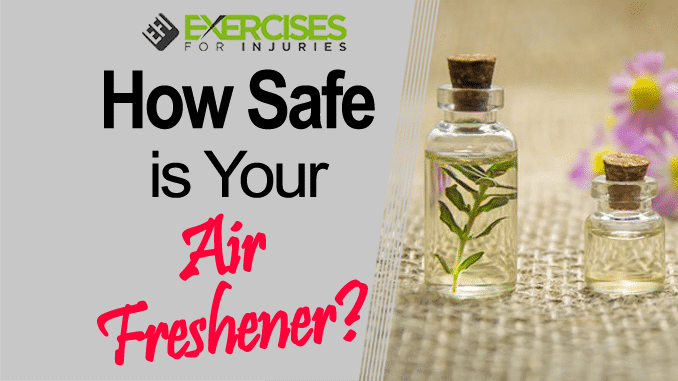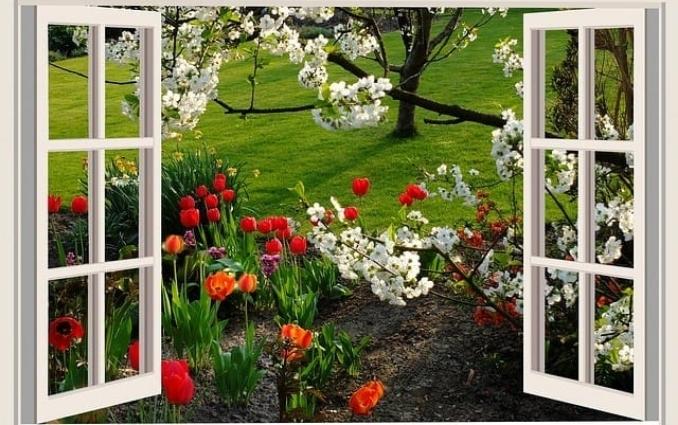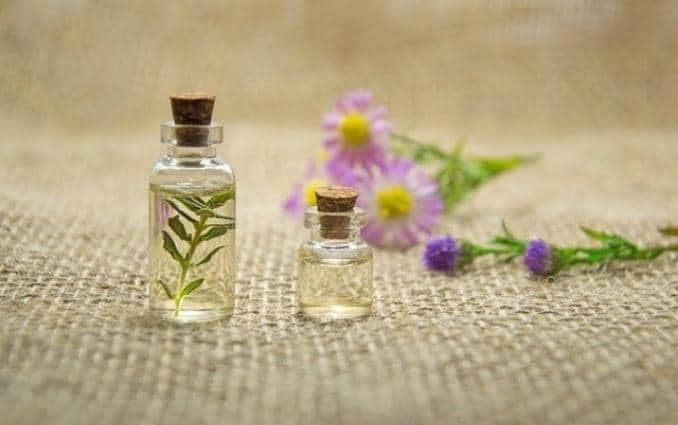
How Safe is Your Air Freshener? How clean is the air inside your home or office? According to the United States Environmental Protection Agency (EPA), probably not very clean. While you may worry about air pollution in the heart of the city. the EPA says that you probably should worry about it more in the confines of your own home.
“In the last several years, a growing body of scientific evidence has indicated that the air within homes and other buildings can be more seriously polluted than the outdoor air in even the largest and most industrialized cities,” the EPA notes. The agency adds that most people spend 90 percent of their time indoors, making indoor air pollution a serious health concern.
What causes indoor air pollution? There are a number of sources, including tobacco products, wood fires, building materials like insulation and carpet, cabinetry made of pressed wood products, household cleaning products, central heating and cooling systems and pesticides. But there’s one more thing that you may be surprised can cause not only indoor air pollution but significant health effects as well: synthetic air fresheners.
The EPA is so concerned about the effects of air fresheners that they have included them in their list of “household hazards” and have warned consumers away from them. “There are four basic ingredients in air fresheners: formaldehyde, petroleum distillates, p-dichlorobenzene and aerosol propellants,” lists the EPA. “Air fresheners are usually highly flammable and also strong irritants to the eyes, skin and throat. Additionally, solid fresheners usually cause death if eaten by people or pets.”
What’s so wrong with air fresheners? Also, if they’re not good for you. What can you use instead to freshen the air in your home and office?
How Air Fresheners Work
How Safe is Your Air Freshener? When we think about freshening the air, usually we think about exchanging old, stale air for new, cleaner air (such as what happens when you open a window). Air fresheners don’t work that way, however.Moreover, according to the Global Recognition Campaign for Multiple Chemical Sensitivity, air fresheners work in one of four ways:
- By using nerve-deadening chemicals to kill your ability to smell
- By coating the nasal passages with an undetectable oily film
- By covering up one smell with another
- Moreover, by breaking down the offensive odor (rarely)
In 2002, the EPA conducted a test on air freshening units that plug into electric sockets and found that when the fragrance chemicals reacted with common indoor air pollutants. Moreover, they created toxic substances like benzene derivatives, pinene and limonene, aldehydes, phenol and cresol.
Studies Link Air Fresheners to Dangerous Health Effects
How Safe is Your Air Freshener? What’s particularly dangerous about air fresheners is that not only do they contain potentially toxic chemicals but they can also negatively affect your health.
In 2006, the University of California, Berkeley, reported that when used indoors under certain conditions, “many common household cleaners. Also, air fresheners emit toxic pollutants at levels that may lead to health risks.” Regular use of the products could exceed regulatory guidelines for exposure levels to these pollutants, they added.
The next year, the Natural Resources Defense Council (NRDC) conducted an analysis of more than a dozen common household air fresheners and found that most contained chemicals that could affect hormones and reproductive development, especially in babies.
In 2010, researchers published a study in the scientific journal Environmental Health that showed women who used more cleaning products and air fresheners in their homes had a two-fold higher risk of breast cancer than women who used few of these products. Overall, those who used a combination of cleaning products were up to 110 percent more likely to develop breast cancer than those who rarely used them. The biggest culprits included solid air fresheners and mold-and-mildew-control products. Regularly replacing the air fresheners, especially when using mold-and-mildew products more than once a week, could lead to exceeding regulatory guidelines for exposure levels to these pollutants.
Furthermore, in 2013, researchers reported that pregnant women who used air fresheners in their homes were more at risk for having babies that suffered from wheezing and lung infections. Moreover, in 2015, researchers again studied air fresheners and found that the use of the products could increase levels of toxic chemicals like terpenes, aldehydes and esters and that these compounds could have potentially harmful health effects, including respiratory symptoms and lung dysfunction. They also noted that the ingredients could react with ozone to produce secondary pollutants like formaldehyde, secondary organic aerosols (SOAs) and other ultrafine particles.
How Safe is Your Air Freshener? “These pollutants then adversely affect human health in many ways,” they wrote, “such as damage to the central nervous system, alteration of hormone levels, and so on. In particular, the ultrafine particles may induce severe adverse effects on diverse organs, including the pulmonary [lung] and cardiovascular [heart] systems.”
Another study involving Public Health England Centre for Radiation, Chemical and Environmental Hazards also found that plug-in air fresheners could produce considerable levels of formaldehyde, a known human carcinogen.
Furthermore, there are more studies showing similar results. Moreover, the bottom line? These air fresheners emit ingredients that can react with the air in your home. Creating toxic byproducts that can damage your health.
Toxic Chemicals Present in Air Fresheners
How Safe is Your Air Freshener? When you see those advertisements for air fresheners, you see people taking these long, deep inhales and closing their eyes as if what they’re breathing in is the freshest, healthiest and cleanest air possible. Unfortunately, nothing could be further from the truth.
Synthetic air fresheners of all kinds, including those that you plug in, spray or leave open and standing are full of toxic chemicals that have been linked to respiratory irritation, asthma and other more significant health issues. Here’s a glimpse at a few of the most potentially dangerous ones:
- Phthalates: The NRDC study above found that 12 out of 14 air fresheners tested — even some that were labeled “natural” or “unscented” — contained hormone-disrupting chemicals known as phthalates. This is a group of chemicals used to make plastics more flexible and harder to break. According to the Centers for Disease Control and Prevention (CDC), people are exposed to phthalates from breathing in air that contains phthalate vapors or dust contaminated with phthalates. CDC scientists also determined that phthalate exposure is widespread in the United States population. Phthalates have been linked with liver, kidney, lung and reproductive system damage.
- Aldehydes: Aldehydes are organic compounds that are widespread in nature, but they have been linked with respiratory allergies and even risk of cancer. Formaldehyde is one type of aldehyde that is considered a carcinogen. The EPA states that exposure to high doses of these aldehydes in animal studies produced nasal tumors, adding that lower concentrations irritate eyes and air passages in humans.
- Ethylene-based glycol ethers: These are common, water-soluble solvents that are used in a variety of cleaning products and air fresheners but are classified as hazardous air pollutants.
- Volatile organic compounds (VOCs): VOCs include a variety of chemicals that can easily become vapors or gases. The EPA has linked them to eye, nose and throat irritation; headaches; damage to the central nervous system; and, in some cases, to cancer. Many air fresheners produce a VOC called “1,4-dichlorobenzene,” which is linked with lung damage.
- Terpenes: In the Berkeley study mentioned above, researchers found that three out of four air fresheners contained a substantial quantity of terpenes (pinene and limonene are terpenes). These are natural products derived from plants found in cleaning products and aromatherapy products, and they can react with ozone. In a 2004 study, researchers reported that byproducts of terpenes, when they react with ozone, can contribute to the growth of secondary organic aerosols (SOAs), which the EPA says are a major component of fine particle pollution and have been linked with heart and lung problems.
- Naphthalene: This is made from crude oil and is found in cigarette smoke, exhaust and smoke from forest fires. It’s also a registered pesticide. It’s qualified as a carcinogen and can also irritate the skin and increase the risk of cataracts.
Unfortunately, you won’t find any of these ingredients on the air freshener label because. Moreover, according to “trade secret” laws, companies don’t have to reveal their presence. The interaction of ingredients with the air can produce byproducts, some of which are chemicals not originally present in the product.
Healthier Alternatives to Freshen Your Air
How Safe is Your Air Freshener? Obviously, synthetic air fresheners are not a good idea for your home or office. If you want to freshen the air, what can you use instead? Moreover, we have several better ideas for you:
- Open a window: Even on cold days, opening a window just for a few minutes can help freshen the air and ventilate your home or office
- Empty the garbage regularly: The more you can get rid of the source of odors, the cleaner your air will be
- Use more indoor houseplants: Houseplants have been proven to help absorb toxins like benzene and formaldehyde from the air. It can help regularly keep your indoor air healthier
- Use natural minerals: Use baking soda and borax to control common odor sources like trash cans
- Consider investing in an air purifier: Home Air Quality Guides has a handy reference guide to find the best one for you
- Use essential oils: You can add a few drops of your favorite scents to cotton balls and place these around the house or simmer a few drops in a saucepan on the stove
- Simmer spices: You can also simmer some spices like cinnamon, cloves or nutmeg in a little water to freshen up your kitchen
- Use vinegar: moreover, cleaning with vinegar, or even putting a bowl of vinegar near the scent, can help clear the air
- Try an orange peel: Toss this down the garbage disposal to freshen up your drain
- Add herbal bouquets: Leave these standing in open dishes so the fragrance spreads throughout the room
For your guide to the best foods to heal your body, check out The Best Foods that Rapidly Slim & Heal in 7 Days, here!




